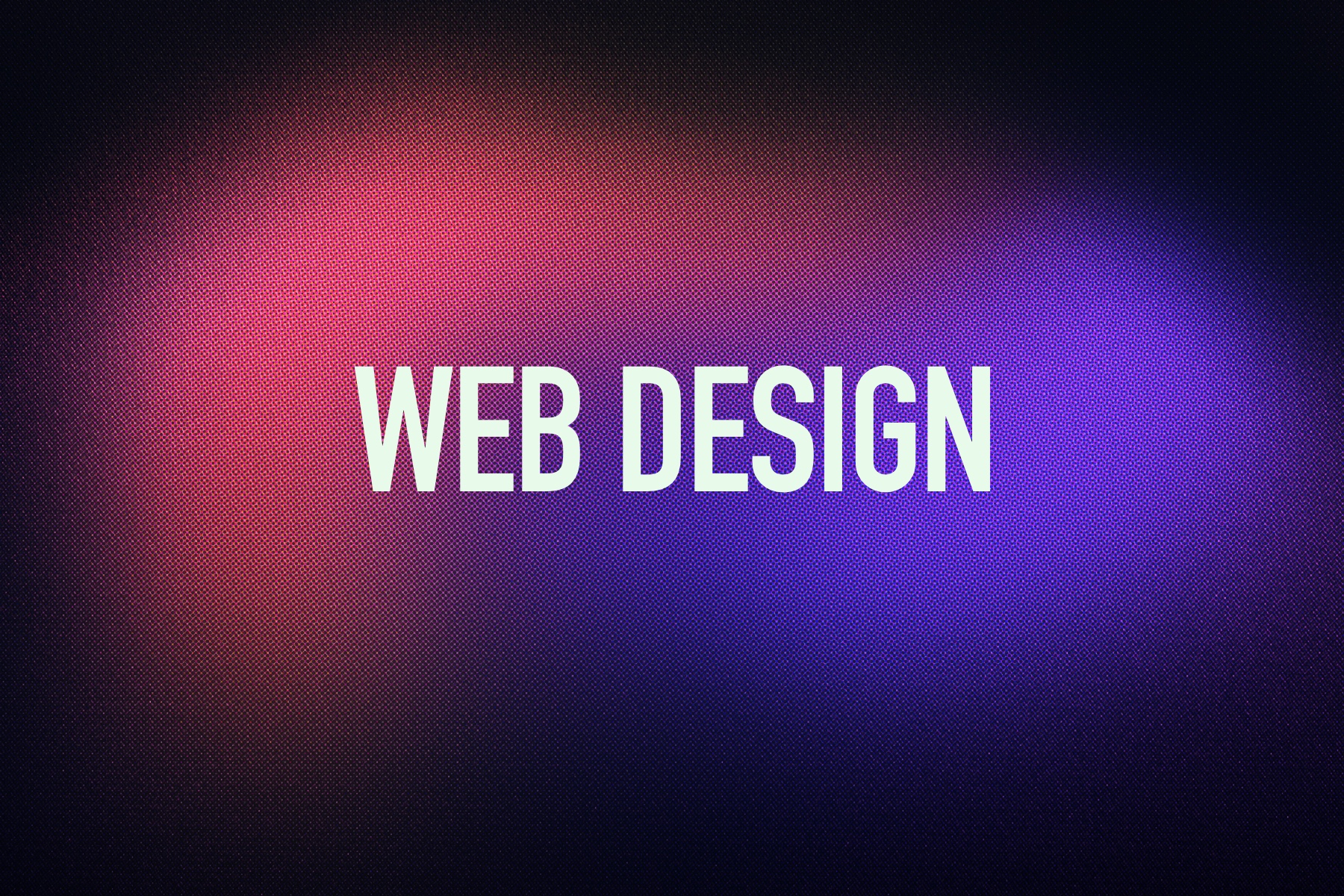Web design serves as a bridge between creativity and practicality, as it strives to construct online spaces that captivate and engage users. By combining visually stunning aesthetics with seamless functionality, modern web design goes beyond mere appearances to deliver an immersive and user-friendly experience that yields tangible results.
Defining Modern Web Design
Modern web design is a broad term encompassing a variety of disciplines, including graphic design, user interface design, and user experience design. It is an ever-evolving field that incorporates the latest trends, technologies, and user behaviour patterns to create websites that are both innovative and accessible.
Balancing Art and Functionality
The challenge for web designers is to create sites that are as functional as they are beautiful. This balance requires a deep understanding of both aesthetic principles and the technical aspects of web development to ensure that the end product is not just a treat for the eyes but also a delight to navigate.
Design for Today’s User
Today’s users expect websites to be intuitive, informative, and inclusive. Designers must prioritise these expectations to create experiences that meet the modern user’s needs.
User-Centric Design Principles
User-centred design puts the needs and preferences of the user at the forefront of the web design process. This approach involves designing for usability, ensuring that the website is easy to navigate and that information is easy to find.
Accessibility and Responsive Design
Inclusivity means ensuring that your website is accessible to all users, including those with disabilities. Responsive design ensures that the website functions well on a variety of devices and screen sizes, an essential feature in our mobile-first world.
Aesthetics and User Experience (UX)
The aesthetics of a website are crucial in making a strong first impression. However, they serve a greater purpose than mere decoration; they play a significant role in user experience.
The Role of Visual Hierarchy
Visual hierarchy is the arrangement of elements in a way that implies importance. By using size, colour, and layout effectively, designers can guide users’ attention to the most important parts of a page, improving the usability and the experience.
Cohesive Color Schemes and Typography
Colour schemes and typography contribute significantly to the mood and readability of a website. A cohesive colour palette and consistent typography help create a seamless experience that can keep users engaged and reduce bounce rates.
Functionality Meets Innovation
A website must be more than just a pretty face; it must also function seamlessly. Users have little patience for confusing navigation or slow loading times.
Streamlined Navigation
Navigation should be intuitive, with a clear pathway to the information or services users are seeking. A well-thought-out navigation structure can enhance the user’s experience and satisfaction.
Interactive Elements
Incorporating interactive elements can engage users and provide a dynamic experience. From hover effects to scroll-triggered animations, these elements can make a website feel alive and responsive to user input.
The Psychology of Design
Design has a profound impact on user behaviour. By understanding the psychological principles behind user interactions, designers can create more effective websites.
Emotional Design and User Behaviour
Emotional design targets the user’s emotions to create a connection with the website. It’s about evoking the right emotions to encourage engagement and brand loyalty.
The Impact of Design on User Decisions
Every aspect of design, from colour to layout, can influence user decisions. By understanding these impacts, designers can subtly guide users towards desired actions, such as making a purchase or signing up for a newsletter.
Speed and Performance
Users expect fast-loading websites. Speed and performance are not just technical concerns but are integral to the user experience.
Importance of Website Speed
Website speed is a critical factor in user satisfaction. Slow-loading websites can lead to increased bounce rates and lost opportunities for engagement and conversion.
Optimising for Performance
Optimising images, leveraging browser caching, and minimising code are just a few ways to improve website speed. A fast-performing website is more likely to retain users and improve search engine rankings.
Content as a Design Element
Content is a core component of web design, working in tandem with visual elements to communicate and engage.
Integrating Content with Design
Content should be designed as meticulously as the visual elements. It must be readable, engaging, and aligned with the overall design to provide a cohesive experience.
Content Strategy for Engagement
A strategic approach to content involves understanding what your audience wants to read and delivering it in an engaging way. This includes using headings, bullet points, and images to break up text and make content easy to digest.
SEO and Modern Web Design
Search Engine Optimisation (SEO) is a crucial consideration in web design. It ensures that websites are discoverable and rank well on search engines.
SEO-Friendly Design Practices
Designing with SEO in mind involves using clean, semantic code, optimising images, and ensuring that design elements do not impede the website’s ability to be crawled and indexed by search engines.
Balancing Design and SEO
While SEO is crucial, it should not come at the expense of user experience. The best web designs find a balance, ensuring that the site is not only SEO-friendly but also appealing and easy to use for visitors.
Mobile-First Design
With the majority of internet traffic coming from mobile devices, designing with a mobile-first approach is no longer optional; it’s imperative.
The Rise of Mobile Browsing
Designers must prioritise mobile functionality to ensure that websites are accessible and user-friendly on smaller screens. This often involves simplifying designs and prioritising load speed on mobile devices.
Designing for the Smallest Screen
Mobile-first design means thinking about how a site will look and function on a mobile device before considering the desktop version. This approach often leads to cleaner, more focused designs that improve the user experience on all devices.
Tools and Technologies
Staying current with tools and technologies is vital for modern web designers to create experiences that are not just current but also forward-thinking.
Latest Web Design Technologies
Keeping abreast of the latest web design technologies allows designers to push the boundaries of what’s possible. From new CSS features to JavaScript frameworks, these technologies enable the creation of cutting-edge websites.
The Impact of Effects and Animation on User Experience
When used appropriately, effects and animations can enhance the user experience by providing feedback, guiding attention, and making interactions more enjoyable. However, they must be used sparingly to avoid overwhelming the user and to ensure that they add to rather than detract from the experience.
Design for Conversions
Ultimately, web design should facilitate the site’s goals, often centred around conversions—whether that’s making a sale, generating leads, or encouraging sign-ups.
Call to Action (CTA) Elements
CTAs are the signposts that guide users towards the action you want them to take. Well-designed CTAs are clear, compelling, and placed strategically to attract attention without being intrusive.
Conversion Rate Optimisation (CRO) Techniques
CRO is the practice of optimising your website to increase the percentage of visitors who take the desired action. This can involve everything from testing different button colours to adjusting the layout of a landing page.
Analytics and Design Evolution
Data and analytics should inform the design process, providing insights into how users interact with the website and where improvements can be made.
Using Analytics to Inform Design
Website analytics can reveal a wealth of information about user behaviour, from the most visited pages to the paths users take through a site. This data is invaluable for making informed design decisions.
The Continuous Evolution of Web Design
The digital landscape is constantly changing, and web design must evolve with it. By paying attention to analytics and industry trends, designers can keep their websites at the cutting edge and continuously improve the user experience.
The Future of Web Design
As technology advances, so does web design. Staying ahead of the curve means being open to new ideas, experimenting with new technologies, and always learning.
Emerging Trends in Web Design
From AI and machine learning to augmented reality, virtual reality, and voice user interfaces, emerging trends are set to shape the future of web design. Designers who actively incorporate these innovative technologies into their design process will be well-placed to create the next generation of websites that offer immersive user experiences and seamless interactions. By leveraging AI-powered chatbots and personalisation algorithms, designers can enhance user engagement and provide tailored content recommendations. Additionally, the integration of blockchain technology can ensure enhanced security and transparency in web transactions. Embracing these cutting-edge trends will empower designers to stay ahead in the rapidly evolving landscape of web design and deliver exceptional digital experiences to users.
Preparing for the Future
The future of web design is exciting and uncertain. Designers must be adaptable, willing to experiment, and always focused on the needs of the user to succeed in the evolving digital landscape.
Conclusion
The art and functionality of modern web design are not only about creating experiences that delight and serve the user but also about enhancing their online journey. By striking a harmonious balance between aesthetic appeal and practical usability, designers can craft websites that not only look great but also provide seamless and intuitive navigation. Moreover, by staying abreast of the latest trends and technologies in the field, web designers can constantly innovate and deliver cutting-edge user experiences. Therefore, it is crucial for designers to remain curious, adaptable, and always prioritising the needs and preferences of the users, ensuring that their websites continue to evolve and exceed expectations.
FAQs
What is the most important aspect of modern web design?
The most important aspect is creating a seamless, user-centric experience that balances aesthetic appeal with functional design.
How does mobile-first design differ from traditional design?
Mobile-first design prioritises the mobile user experience from the start, often leading to cleaner and more focused designs for all devices.
Can animations negatively affect user experience?
If overused, animations can be distracting or slow down the site. Used wisely, they can enhance the experience by providing feedback and guiding attention.
How often should a website’s design be updated?
A website’s design should be reviewed regularly, with major updates considered every few years or when significant user behaviour changes are observed.





